Kelly Jordan, Detroit Free Press
The rocks clink together under the steps of Vince Cavalieri as he walks along the shoreline of Lake Michigan. Small waves lap against the edges of his boots.
Suddenly, Cavalieri stops and points to his left. Grabbing the binoculars hanging around his neck, Cavalieri scans the pebbled beach stretching 100 yards in front of a multistory sand dune at Sleeping Bear Dunes.
"I heard a male scraping call," Cavalieri said. He peers out, looking for the chirping bird who is likely kicking away sand from a possible nesting site. Seeing none, he says they must be "scraping" at the bottom of a dip in the beach surface, below eye level.
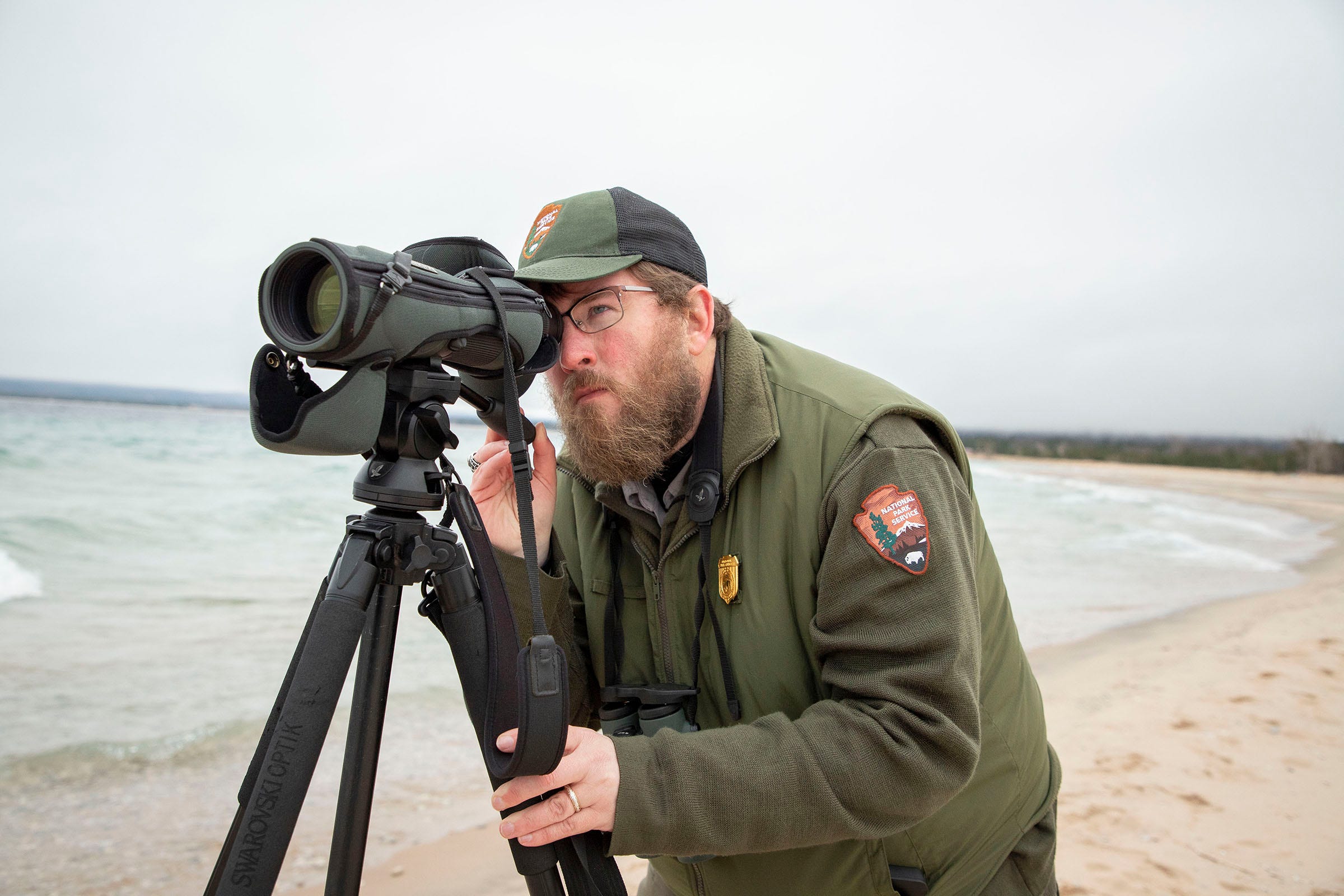
But he doesn't doubt that he heard the call. Cavalieri knows their songs by heart. The plovers are here, and his sole focus for the next five months is to watch over them.
Endangered and endearing
The birds who've stolen Cavalieri's heart and been the focus of his career for over a decade are the Great Lakes piping plover, Charadrius melodus, a federally registered endangered species known to nest only along the Great Lakes and predominantly at Sleeping Bear Dunes National Lakeshore. The other two populations of piping plovers — the Northern Great Plains and Atlantic Coast populations, named for their nesting locations — are listed as threatened, not endangered.
The birds stand just 7 inches tall and weigh only 50 grams, or the weight of two AA batteries. Their call is a unique, two-noted "peep-lo" whistle, which Henry David Thoreau reminisced in his 1865 work "Cape Cod" "most perfectly revives the impression which the beach has made."
Cavalieri is the wildlife biologist at Sleeping Bear Dunes, where he leads the National Park Service piping plover conservation team. Before that, he was an endangered species biologist and piping plover coordinator at the U.S. Fish and Wildlife Service based in Michigan.
"It's a dream job," Cavalieri said. "I've been here to see them go from 50 pairs to 60 to 75, and you can actually see these outcomes for this incredibly rare species."
"I told my old boss once, 'Some people go through their 40 hours, but we can always say we help save a species.' And that always meant a lot to me."
The main defense plovers hold against their predators, like the falcon species of merlins, is near-perfect camouflage against the cobbled beaches of Lake Michigan.
Their top feathers are the color of dry sand and their bottom feathers are white, blending in with the light gray stones on the beach. The birds have a thin black collar-like band around their neck, which might be mistaken as a small waterlogged stick poking up from the sand. Their eggs — always totaling four per nest, laid every other day — look similar to pitted vesicular basalt stones.
Only once they start scuttling can they be distinguished from the rocks. It's then that their charismatic personality is on full display.
Plovers, like many shorebirds, dart and stop quickly when hunting for bugs to eat. But with their short legs, plovers don't dare tread in the water lest they be swept away, preferring to stick to the sand just above the lapping waves when searching for food.
There, they dip into the inches-deep divots in the sand, sticking their white rump in the air and poking their black-tipped orange beak up as they resurface. This quick scuttering dance down and over the contours of the sand appears like they are bobbing on the waves.
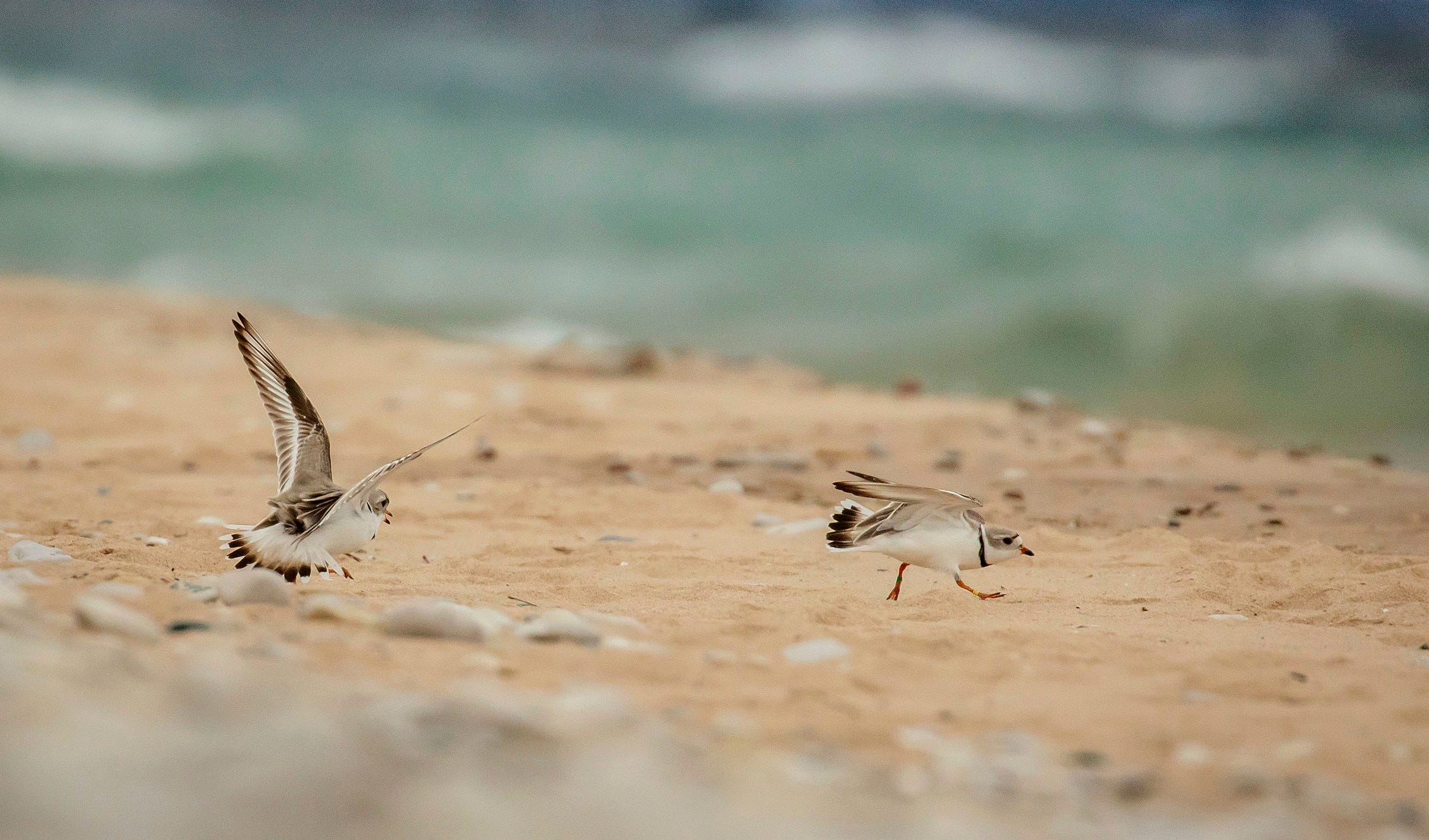
Almost explicitly, their behavior is charming. Even aggressive behavior between birds vying for territory or mates is more amusing than serious to the human eye: they puff out their white chest and scamper at or in parallel to the offending bird. Their walk is pigeon-toed, leaving trails of 1-inch-long footprints pointing inward in the sand.
Some plovers are less shy to humans, industrially scrapping out nests in the sand while birders creep closer to take a picture. The bolder birds typically get their own names and social media accounts, like multiyear mates Monty and Rose of Montrose Beach in Chicago. They even starred in a documentary by filmmaker Bob Dolgan, a former volunteer plover monitor.
As bird watching becomes more popular, groups like the Chicago Ornithological Society use the fame of well-known birds like Monty and Rose to educate the public on conscientious birdwatching. The Twitter accounts encourage beach cleanups and warn against "Ploverazzi" causing them to "go the way Princess Di did."
The team
The first plover returned to Sleeping Bear Dunes on April 11, 2022. It was RRG, pronounced "Erg," named after the orange, red and green bands on his legs. He's a friendly chap known as one of the first returners each spring.
Dressed in forestry NPS gear, the plover monitors spring into action when the first bird is spotted. Most monitors are seasonal biology technicians who come back year after year. Others are full-time staff through the NPS, Fish and Wildlife Service, or the University of Minnesota research program. Some two dozen organizations make up the robust Great Lakes piping plover conservation team, including the Little Traverse Bay Bands of Odawa Indians and the Bad River Band in Wisconsin.
"They're the most monitored birds out there," one technician quipped after a morning monitoring session along the plover territory near Sleeping Bear Point, which is marked off with string-and-stick fencing from the public.
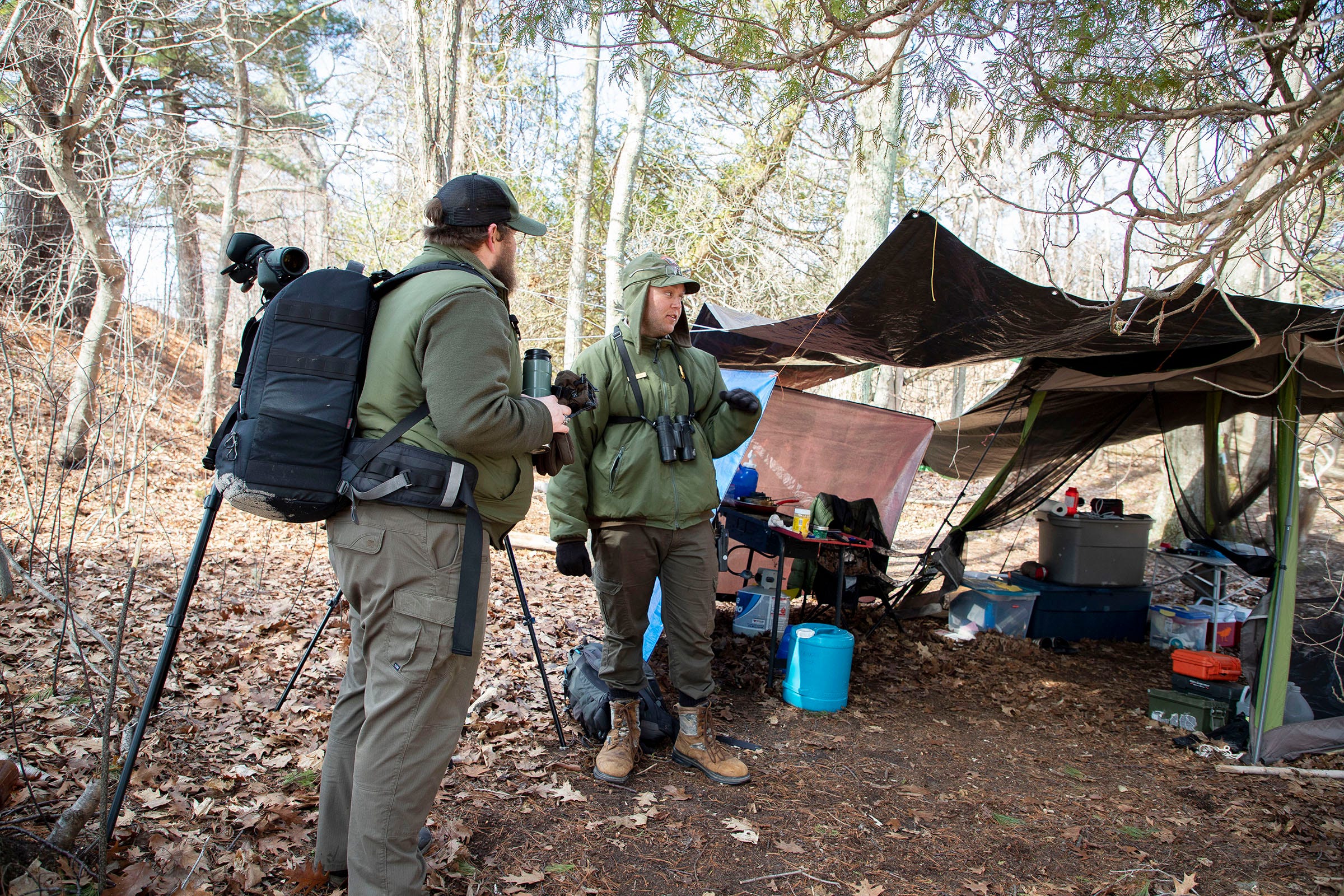
The plover monitors are tasked with the seemingly straightforward job of watching the birds. In practice, it's far more difficult. Yet most feel a sense of responsibility permeated through their day-to-day tasks, like Logan Clark, a return plover monitor.
"They're a species that's been here much longer than people, and people are largely responsible for the position they're in," Clark said. "It's our responsibility to care and do something about it."
They walk miles of shoreline each day looking for birds, regardless of the weather, until the plovers migrate south in mid-July. They also camp for up to five days at a time, completely alone, on North Manitou Island looking over the nesting sites at Dimmick's Point.
"Last week, it snowed every day in camp," Clark said on day three of his five-day shift camping on North Manitou Island. "When the wind picks up, it's like sleeping on a bridge."
In early to mid-April, the monitors observe males marking their territory and making possible nests, noting where the areas are with GPS coordinates.
Once the females arrive a week or two later — this year, on April 16 — the monitors carefully tread among the cobbled beach to find the speckled, stone-like eggs and place a wire exclosure around them. The plovers can easily hop through the exclosure's holes, but larger birds and animals cannot, keeping the eggs safe for their roughly 28-day incubation period.
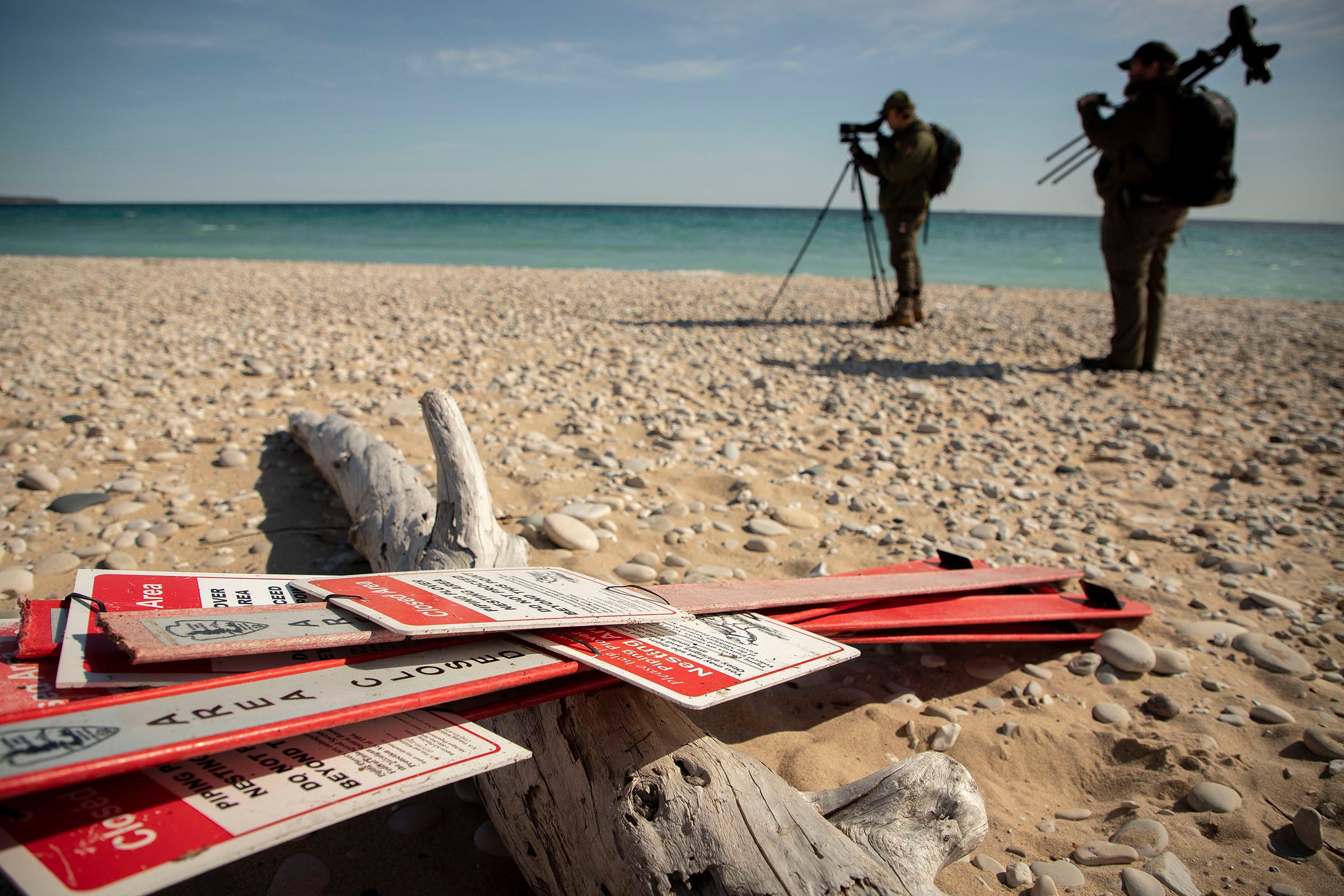
If a nest is abandoned, the monitors are responsible for gathering the eggs, and placing them in the temporary solar panel-powered incubator in the camp until they can be transported to the Detroit Zoo for incubation and later to the University of Michigan Biological Station near Pellston for rearing. Once the chicks can fly, they are reintroduced to their original home in the dunes.
The entire plover monitor team assists in the chick banding process, a safe practice conducted on millions of birds and overseen by the USGS Bird Banding Laboratory. Within just 10 minutes, the chick is placed back in its nest, hardly noticing the unique pattern of colored plastic bands affixed to its legs.
When the Great Lakes piping plovers were listed as an endangered species in 1986 under the authority contained in the Endangered Species Act of 1973, the population numbered just 17 pairs. Within a few years, the population declined to 11-14 pairs, all within the state of Michigan.
Now, Cavalieri expects nearly 2½ times as many pairs in 2022 as in the late 1980s. In 2021, there were 35 nesting pairs in Sleeping Bear Dunes and 74 total. A record high of 81 chicks fledged in the wild because of a 2.31 chick survival rate per pair, another record high. Eight captive-raised chicks were released in the park.
Plover chicks are precocial, meaning they become self-sufficient within hours after hatching. Plover parents and monitors spend several frantic weeks chasing and monitoring the chase of chicks back to the nest, avoiding merlins and other predators. By mid-July, the fledglings and parents fly off into the sunset.
Only around 40% of hatched chicks return the following year. But that is the one number Cavalieri is not concerned about. "They're just figuring out how to be a plover," Cavalieri said matter-of-factly. "Not all of them are going to make it."
After that first year, roughly 90% of plovers return year after year.
Harbinger for health
What makes the Great Lakes piping plovers unique is their significance within the Great Lakes conservation effort. Although small in stature, plovers play an outsize role in maintaining the dunes Michiganders love.
"Plovers are an umbrella species," Cavalieri said. "The kind of habitat they use — big wide open beaches associated with dune systems — is a really important habitat in the Great Lakes. By protecting piping plovers, you're kind of casting an umbrella over the entire (ecosystem with) protection and conservation."
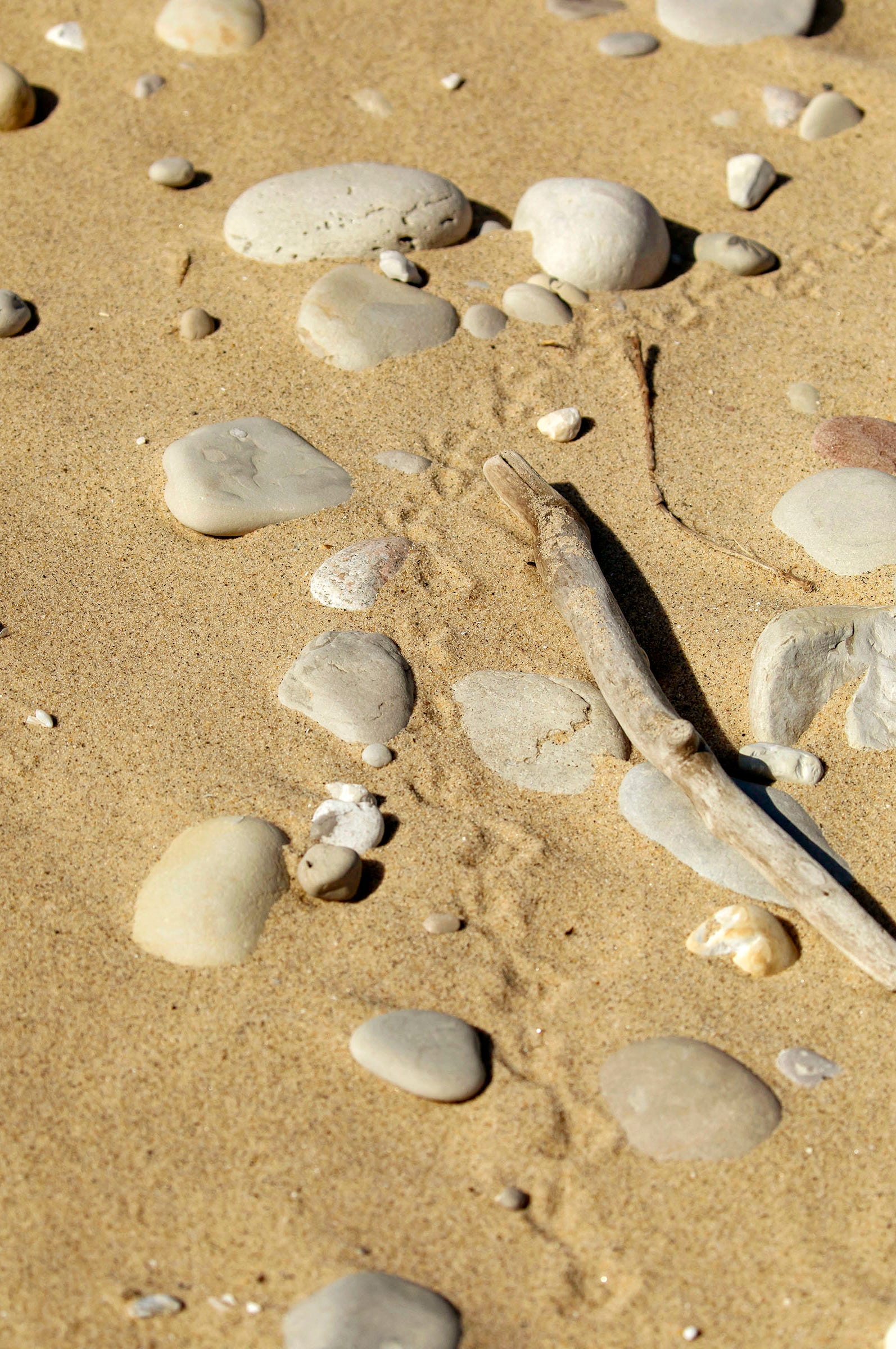
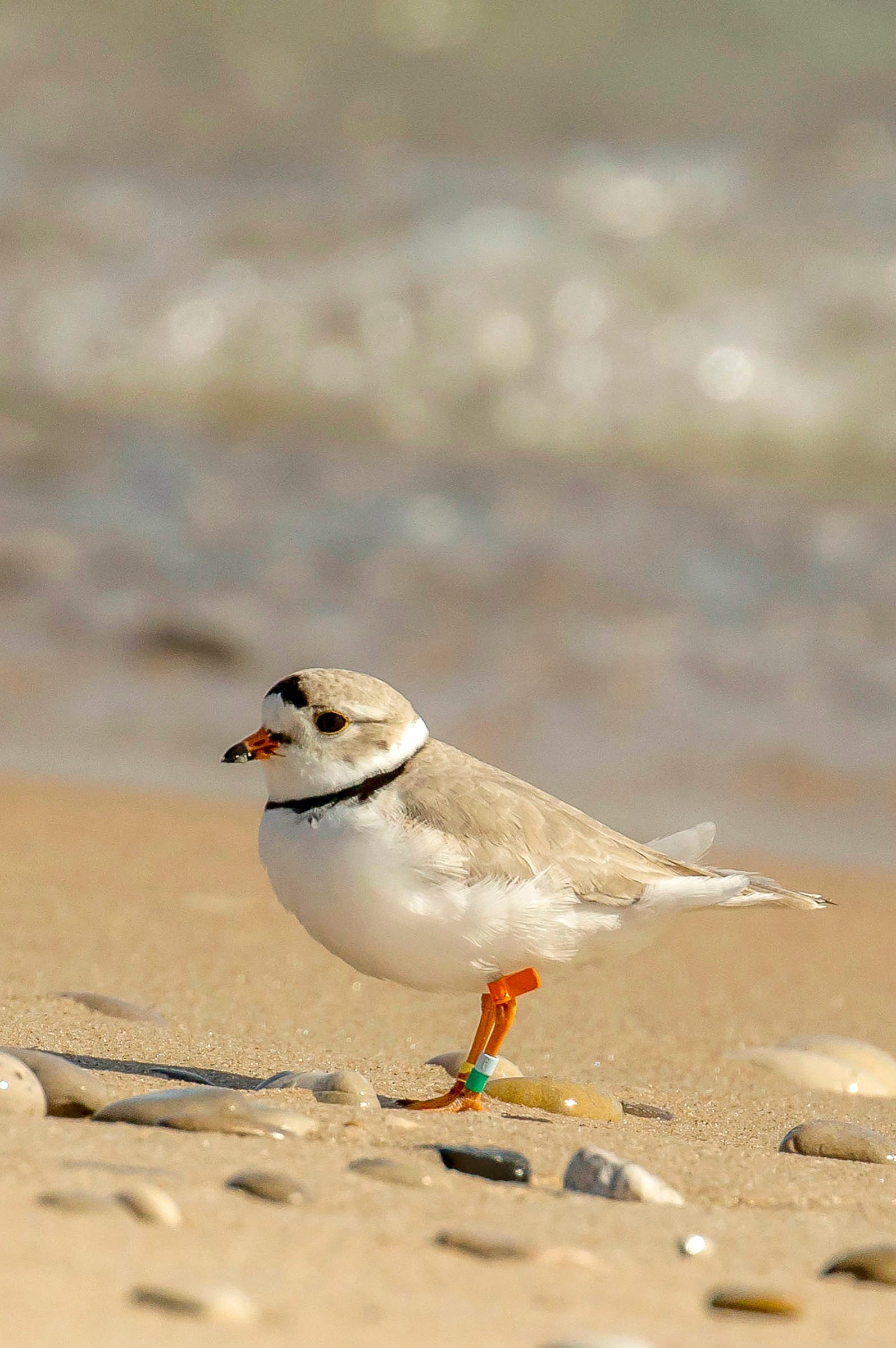
They're also a rigid species, Cavalieri said. The same plover will fly roughly 1,500 miles to the same location in Florida, Georgia, Texas or the Caribbean each July, and return to the same dunes in the Great Lakes each spring.
"They're a really great harbinger of ecosystem health because if those places get lost, the birds simply disappear."
For example, if the pebbled beaches are replaced with a seawall or a new beachfront resort development disturbs the peaceful habitat, the plover population might take a dramatic downturn. Or, if sea levels rise over the wide-open beaches along Lake Michigan, they might be forced to nest nearer to the tree line, and to predators.
More: Endangered piping plovers face trouble from surging Great Lakes levels
Yet to Clark, the plovers show remarkable resiliency for surviving amid all the changes to their habitats.
"Even before people showed up here, their habitat was very dynamic, moving around, because that's just how the dunes are," Clark said. "They have to be adaptable in some ways, but now things are changing so fast that they can't keep up."
In 2002, the Fish and Wildlife Service listed the criteria that needs to be met in order to reclassify piping plovers from endangered to threatened.
The top priority is population growth. In order to be delisted as endangered, the Great Lakes piping plovers must reach 150 nesting pairs with 50 living outside of Michigan. The other criteria include a 1.5 to 2 fledgling per nesting pair rate, which the Sleeping Bear Dunes plovers currently exceed.
It all seems doable in Cavalieri's mind. But it might not happen fast. The 2002 FWS statement anticipated reaching the criteria by 2020, but in 2022, the Great Lakes piping plovers are only halfway to the population goal.
Their numbers grow by two or three pairs per year, meaning it could take another 30 years to get to 150 from the current 74 pairs. "That might not happen in my career lifetime," Cavalieri admits.
For now, Cavalieri focuses on the efforts known to increase plover population growth: human-free habitats, captive rearing for abandoned eggs and attentive monitoring throughout the nesting process.
Future plover studies may focus more heavily on wintering habitats on southern beaches, which was listed as a goal in the 2016 recovery plan by the Fish and Wildlife Service. It's a "nebulous" problem that lacks the concrete quantitative metrics found in nesting and hatching plans.
"On the wintering ground, it's more like, protect the habitat and don't disturb the birds," Cavalieri said. "And that's a little bit harder. There's a lot of different stakeholder groups that have interest in the southern beaches. Some of the states allow driving (on the beaches), which is, obviously, not great for plovers. A lot of these places have seen increased tourism."
However, the plan did not mention the maintenance of stopover sights along the migratory pathway. Cavalieri expects they are somewhere in Missouri, Ohio or maybe Kentucky, but does not know. Nanotag radio transmitters, like those used on monarch butterflies, may be an option now that the plover population is not so dramatically low.
Buying time
Despite the multiple agencies watching over them, the Great Lakes piping plovers still maintain a precarious perch in the world. They are, and likely will be for decades to come, listed as an endangered species. Sudden natural or humanmade changes to their habitat or health could wipe them out completely.
Cavalieri is well aware of the what-ifs. Like many in conservation, he carries an air of cheeriness tinged with resignation. “That great Aldo Leopold quote — 'One of the penalties of an ecological education is that one lives alone in a world of wounds' — is kind of true," Cavalieri said.
"You see everything that's wrong with the world. You'll go out in a nice field and it's full of invasive species. Everyone else sees that beautiful field of wildflowers and you just see a problem."
"But I like to think of it as like we're buying time. Once piping plovers are extinct from the Great Lakes, that's it, that's gone. But if we're able to keep it here for 30 or 40 years, other people are going to be working on solutions."
"It's part of a team, you can't put it all on yourself. You have to decide what you can do and do it."
Elissa Welle is a breaking news reporter. You can email her at ewelle@freepress.com or find her on Twitter at @ElissaWelle.